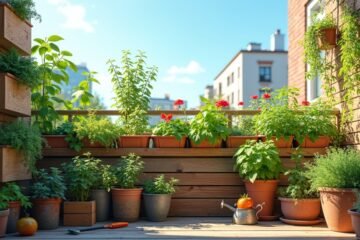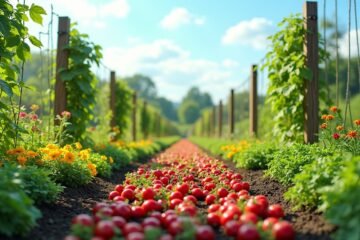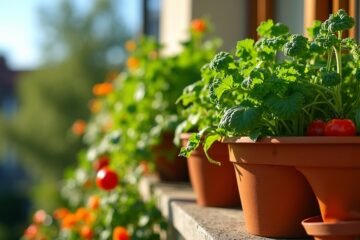To prepare your soil for a small vegetable garden, start by checking its type—sandy, silt, or clay. Then, test the pH; it should be between 6.0 and 7.0 for happy plants! Clear away any debris like rocks or fallen leaves, and loosen the soil with a garden fork to improve water drainage. Finally, mix in organic matter like compost to boost nutrients. Want to make your garden even more vibrant? Stick around for more tips!
Assessing Your Soil Type
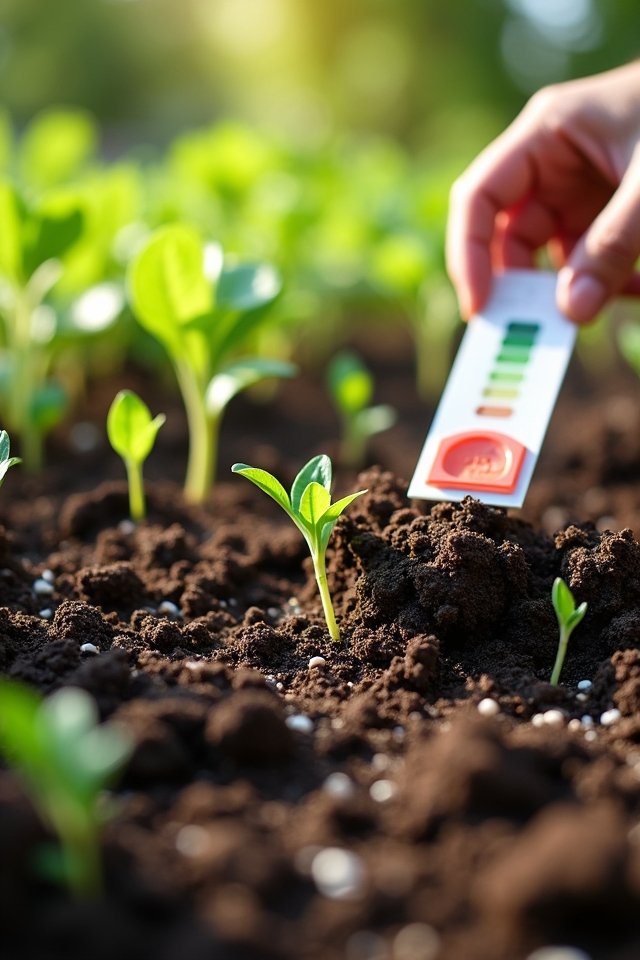
When you plunge into the world of vegetable gardening, understanding your soil type is like choosing the right pair of shoes for a hike—it’s absolutely essential! Imagine your soil as the stage where your veggies perform. First, check its texture: is it sandy and crumbly, or dense and clay-like? A well-balanced mix of sand, silt, and clay offers the best drama for plant growth! But beware of soil compaction; it’s like trying to run a marathon in a too-tight corset—restrictive! If your soil feels like cement when you press down, you’ll need to loosen it up. Adding organic matter can help aerate it, creating the perfect environment for your plants to take center stage and flourish! Are you ready to dig in?
Testing Soil Ph and Nutrient Levels
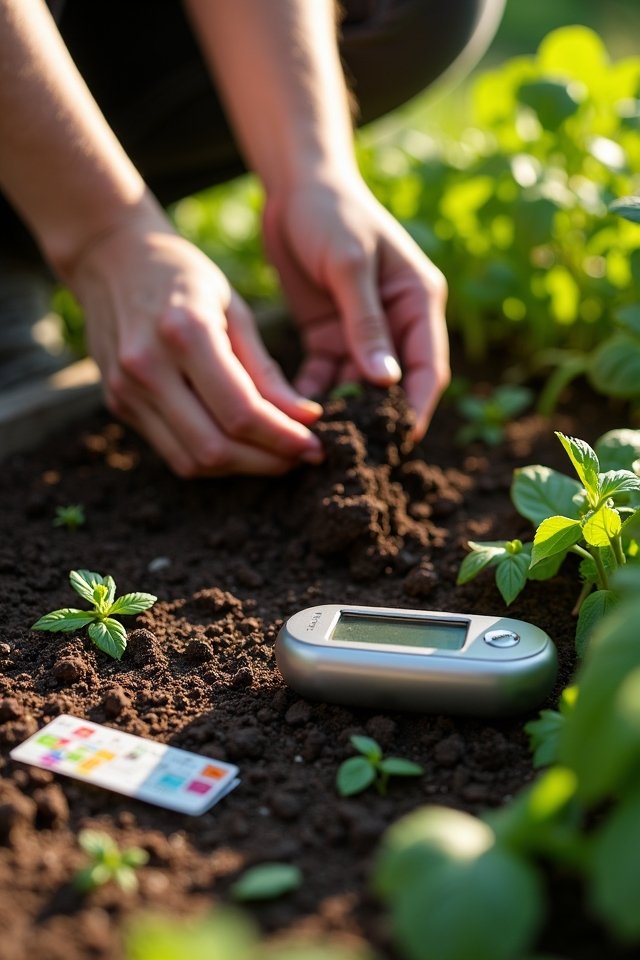
How do you know if your soil’s ready to be the star of your vegetable garden? It’s all about soil testing and nutrient analysis! Grab a soil test kit, and let’s explore! A pH reading between 6.0 and 7.0 is ideal, so think of it as your garden’s sweet spot. Too acidic or alkaline? No problem! You can tweak it with lime or sulfur.
Next, check nutrient levels. Know what your plants crave! Look for essentials like nitrogen, phosphorus, and potassium. If they’re low, it’s like inviting guests to dinner without the main course! Add organic fertilizers to enrich your soil, ensuring your veggies will flourish. Happy testing—your future garden will thank you!
Clearing the Garden Area
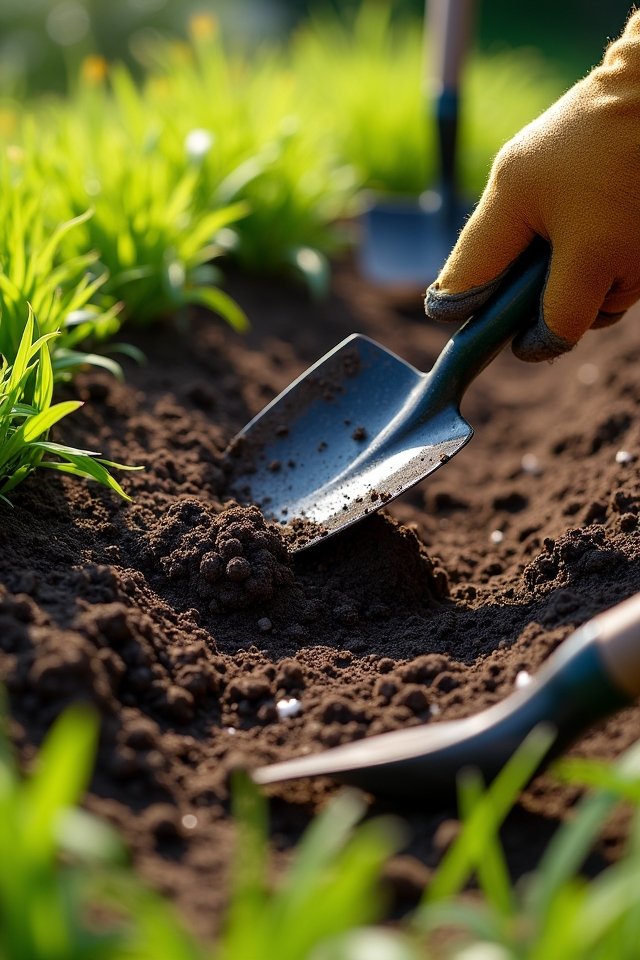
Now that you’ve tested your soil and know what it needs, it’s time to clear the garden area! Start by choosing a location that gets plenty of sunlight and is easily accessible. Then, roll up your sleeves and get to work removing debris—be it fallen leaves, rocks, or stubborn roots. Imagine you’re a treasure hunter, unearthing the perfect patch for your veggies! As you clear the space, think of it as creating a blank canvas for your masterpiece. Maybe you’ll find a fist-sized rock that’ll make a great garden gnome base! Take pride in your efforts; a clean area means healthier plants. Soon enough, you’ll be transforming this space into a vibrant little food haven. Ready to dig deeper?
Loosening the Soil
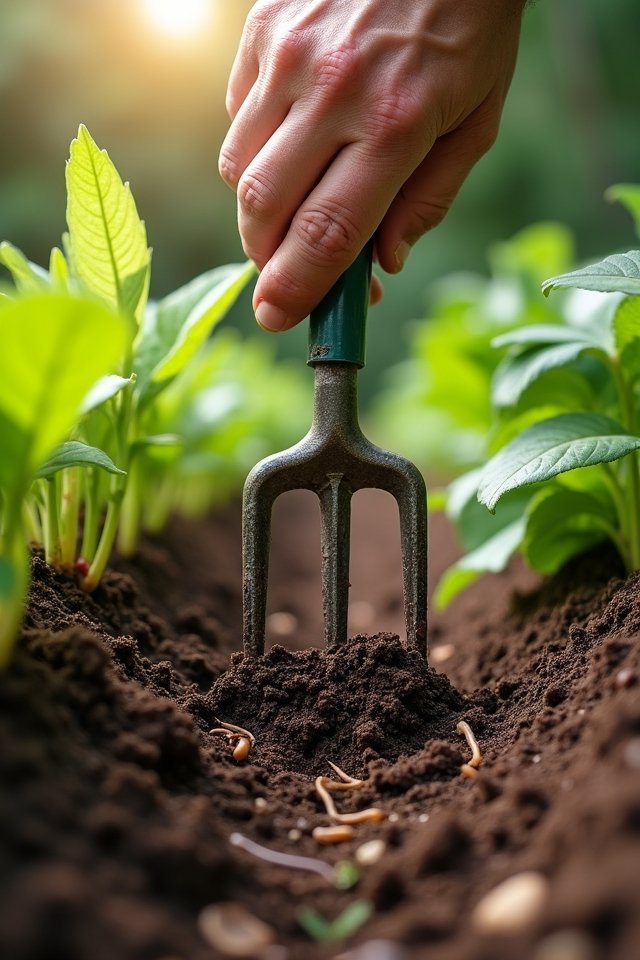
As you immerse yourself in the next step of your gardening adventure, loosening the soil is like giving your plants a cozy blanket to snuggle into! Employ soil aeration techniques, like using a garden fork or tiller, to break up compacted soil and breathe life into it. You’ll reveal the benefits of loosening, such as better water drainage and healthy root growth. Imagine your veggies stretching out their roots, reaching for nutrients like kids in a playground! Plus, it keeps those pesky weeds at bay—who doesn’t love less competition? So, roll up your sleeves, plunge in, and feel the rich, crumbly texture of well-aerated soil. Your plants will thank you for the cozy, welcoming environment you’ve created!
Amending the Soil With Organic Matter
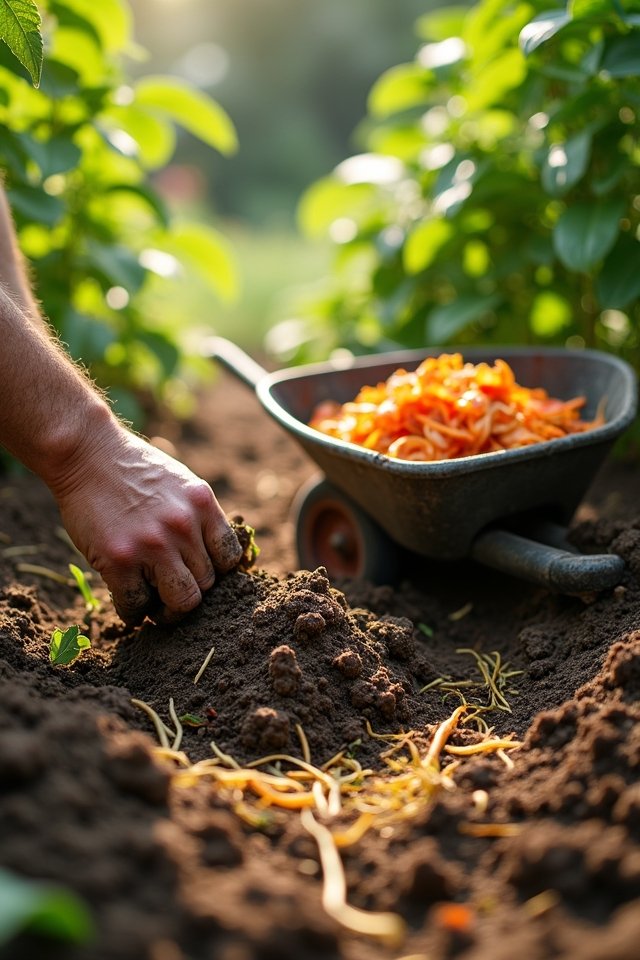
While you might think of soil as just dirt, amending it with organic matter is like throwing a fabulous party for your plants! Imagine inviting luscious compost, rich in nutrients, to mingle with your soil. This is where the magic happens because compost benefits your garden by improving soil structure, retaining moisture, and boosting that delightful microbial activity. You can also toss in shredded leaves, grass clippings, or well-rotted manure for extra punch! Organic amendments like these don’t just feed your plants; they make your garden a thriving ecosystem. So, let your soil soak up these gifts from nature and watch your veggies party hard. Who knew transforming your garden could be this fun—and a little messy? Get your hands dirty and join the fun!
Incorporating Fertilizers and Nutrients
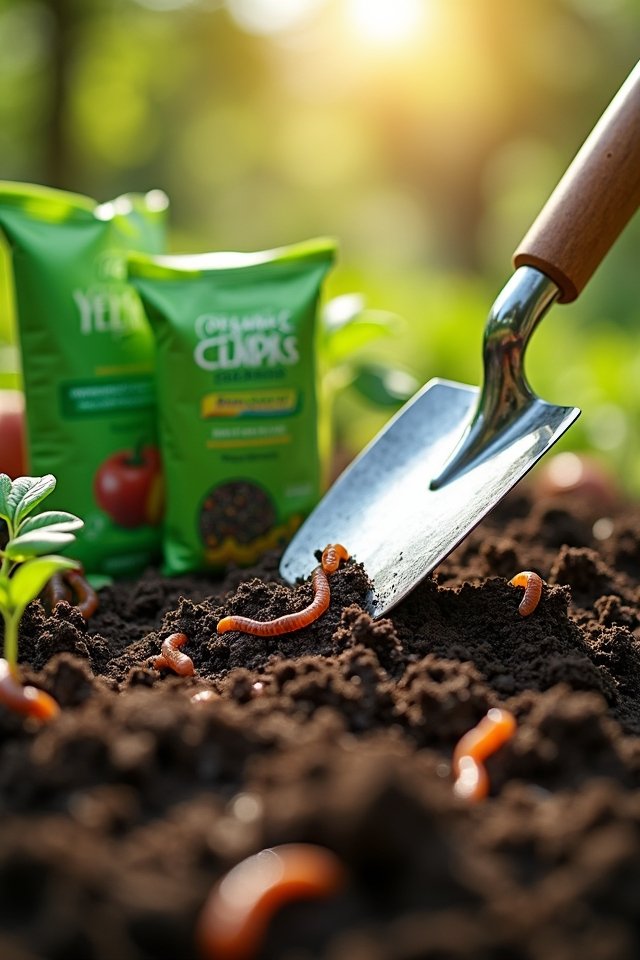
To really boost your garden’s potential, sprinkling in fertilizers and nutrients is like giving your plants a supercharged energy drink! You’ll find various fertilizer types and nourishing nutrient sources, so let’s explore how to make your choice. Think of your plants as athletes—they need the right fuel!
- Compost: Rich in organic materials, it’s a powerhouse for nutrients!
- Fish Emulsion: This smelly but effective option adds micro-nutrients quickly.
- Bone Meal: Packed with phosphorous, it promotes root growth like a charm.
- Mineral-Rich Rock Dust: Think of this as the secret ingredient that packs extra minerals.
- Liquid Seaweed: It’s like a spa day for your plants, boosting health and vigor!
Have fun experimenting! Your veggies will love the treat!
Ensuring Proper Drainage
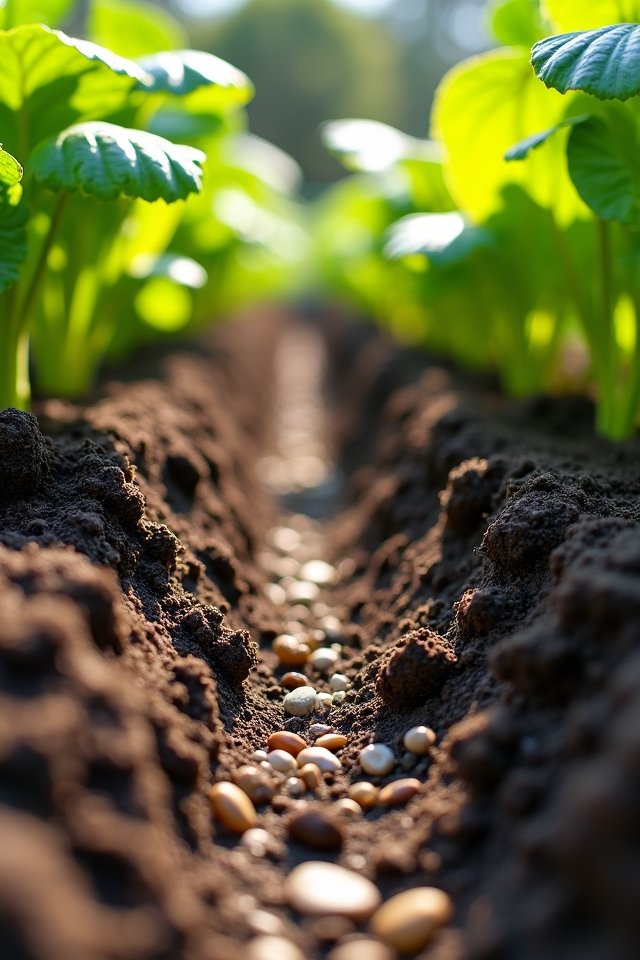
Pouring nutrients into your soil is a fantastic start, but without proper drainage, those nutrients can turn into a soggy mess! You don’t want your plants swimming in mud, do you? To avoid soul-crushing soil compaction, consider innovative drainage solutions like adding organic matter, such as compost or peat. These magical ingredients improve aeration and water flow. You might also try creating raised beds—perfect for directing excess water away! And don’t forget about mulch; it acts as a protective blanket that prevents erosion while keeping moisture in. Your plants want to thrive, not drown! So, immerse yourself in these ideas, and let that nutrient-rich soil breathe! Your future veggies will thank you with abundance and luscious flavor!
Maintaining Soil Health Throughout the Growing Season
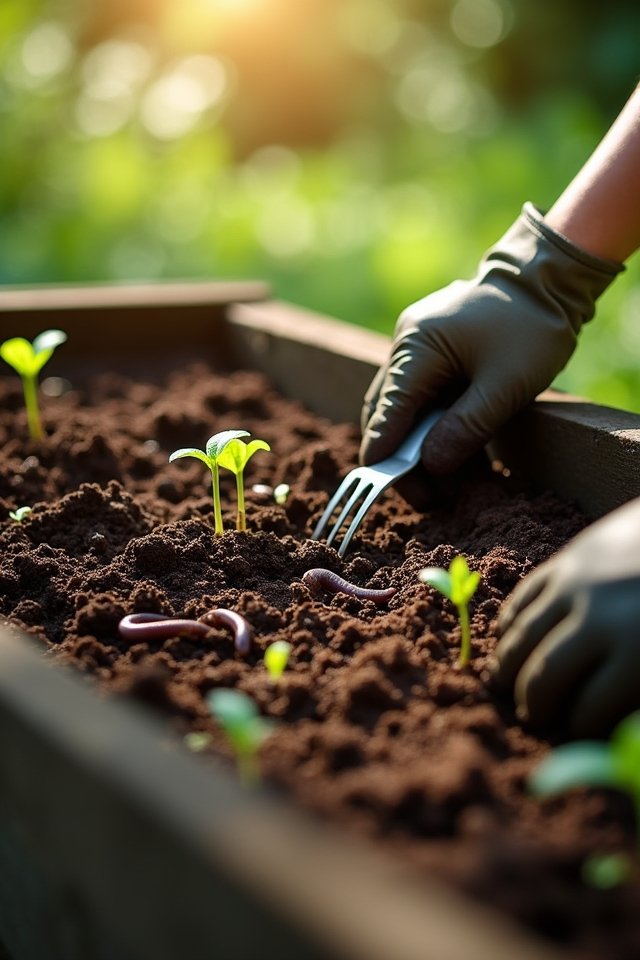
As your veggies start to grow and flourish, keeping your soil healthy is like giving them a cozy home, making certain they stay happy and productive! You’ll want to focus on a few key practices:
- Rotate your crops seasonally to prevent pests and diseases from sticking around.
- Plant cover crops in the off-season, enriching the soil while keeping weeds at bay.
- Regularly add compost to provide essential nutrients and improve texture.
- Mulch around your plants to retain moisture and regulate temperature.
- Periodically test your soil’s pH to make sure it’s just right for your veggies!
Frequently Asked Questions
How Do Earthworms Benefit My Vegetable Garden’s Soil?
Imagine your garden as a bustling city, and earthworms are its hardworking construction crew! These squiggly superheroes benefit your soil by enhancing aeration, creating air pockets that let roots breathe—like giving them a invigorating gulp of fresh air. Plus, they munch on organic matter, transforming it into nutrient-rich castings. Isn’t that nature’s own fertilizer factory? With earthworms in your corner, your veggies will thrive, looking vibrant and delicious as they bask in all that goodness!
Can I Use Lawn Clippings as Soil Amendment?
Absolutely, you can use lawn clippings as a soil amendment! They’re like a green superhero for your garden, packed with nutrients and moisture. Mix clippings into your compost bin using smart composting techniques, and watch them break down into rich, dark gold for your plants! Just remember, don’t pile them too high—too much can create a soggy mess. So, spread them out, and let nature work its magic! Exciting, right?
What Common Weeds Should I Remove Before Planting?
Before you plant, tackle those pesky weeds like a warrior facing a dragon! Start with common culprits like dandelions and crabgrass. Use proper weed identification to spot them easily. Once you’ve found them, employ removal techniques like pulling or hoeing to clear your garden’s stage for those lovely vegetables. It’s all about creating a welcoming environment! So roll up your sleeves and show those weeds who’s boss—your veggies will thank you!
How Often Should I Re-Test My Garden Soil?
You should re-test your garden soil every year, especially if you’re keen to boost those nutrient levels! Just like a good wine improves with age, so does your soil when you monitor it. Testing reveals surprising secrets, like hidden deficiencies or excesses. Think of it as a cheeky interrogation! Regular testing keeps your garden thriving, allowing you to adjust your nutrient strategy. Now, go on, give your soil a little love and attention!
Is It Necessary to Cover the Soil in Winter?
You might think covering your soil in winter isn’t essential, but just like a cozy blanket keeps you warm, winter mulch offers crucial soil protection! A layer of straw or leaves prevents erosion, retains moisture, and protects delicate organisms. Imagine your soil hibernating under a fluffy quilt, waiting to spring back to life! Plus, it reduces weeds, making your garden’s wake-up a breeze. Trust me, your soil will thank you come spring!
